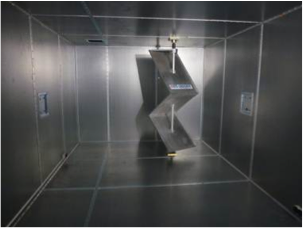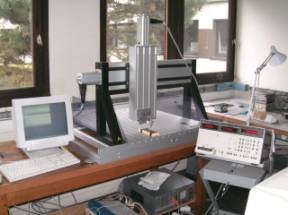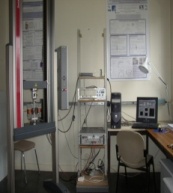Spectral response
The developed system allows the study of the spectral response and quantum efficiency of solar energy conversion devices. In addition, the second branch of the optical fibre allows an optical bias to be superimposed on the illumination from the FTIR. It is then possible to study multi-junction cells.
As an example we present in figure 1 the variations of the external quantum efficiency (EQE) as a function of photon energy obtained on a tandem cell composed of a GaAs cell deposited on a c-Si cell. To determine the EQE of the GaAs cell the c-Si cell was saturated with an optical bias at 905 nm, and to measure the EQE of the c-Si cell the GaAs cell was saturated with an optical bias at 470 nm. Good agreement is observed for the short-circuit currents under AM1.5G, Jcc, of each of the cells as Jcc = 11.8 mA/cm2 for the GaAs cell and Jcc = 11.0 mA/cm2 for the c-Si cell.
| Figure 1: Measurement of the EQE as a function of photon energy for each cell of a GaAs/cSi tandem cell fabricated at CEA Liten (Grenoble, France) |
Spectral response mapping
The fast acquisition of spectral response spectra obtained with the system based on Fourier transform measurements makes it possible to map large area solar cells.
Figure 2 shows a mapping of a multi-crystalline silicon cell. The mapped area is 2.5×2.5 cm2 and each 5 mm diameter circle corresponds to an area where the full spectral response was measured from 390 nm to 1100 nm. The acquisition time for all these spectral responses is about 5 minutes. The graph on the left shows with yellow shading that at the wavelength of 950 nm the spectral response varies between 0.55 and 0.63 A/W (12% difference). The graph on the right shows that the positions where the spectral response is lowest correspond to regions of the cell containing several macles. It can therefore be assumed, as expected, that the grain boundaries significantly reduce the solar energy conversion of this device.
| Figure 2: Spectral response mapping of a multi-crystalline silicon solar cell. |






